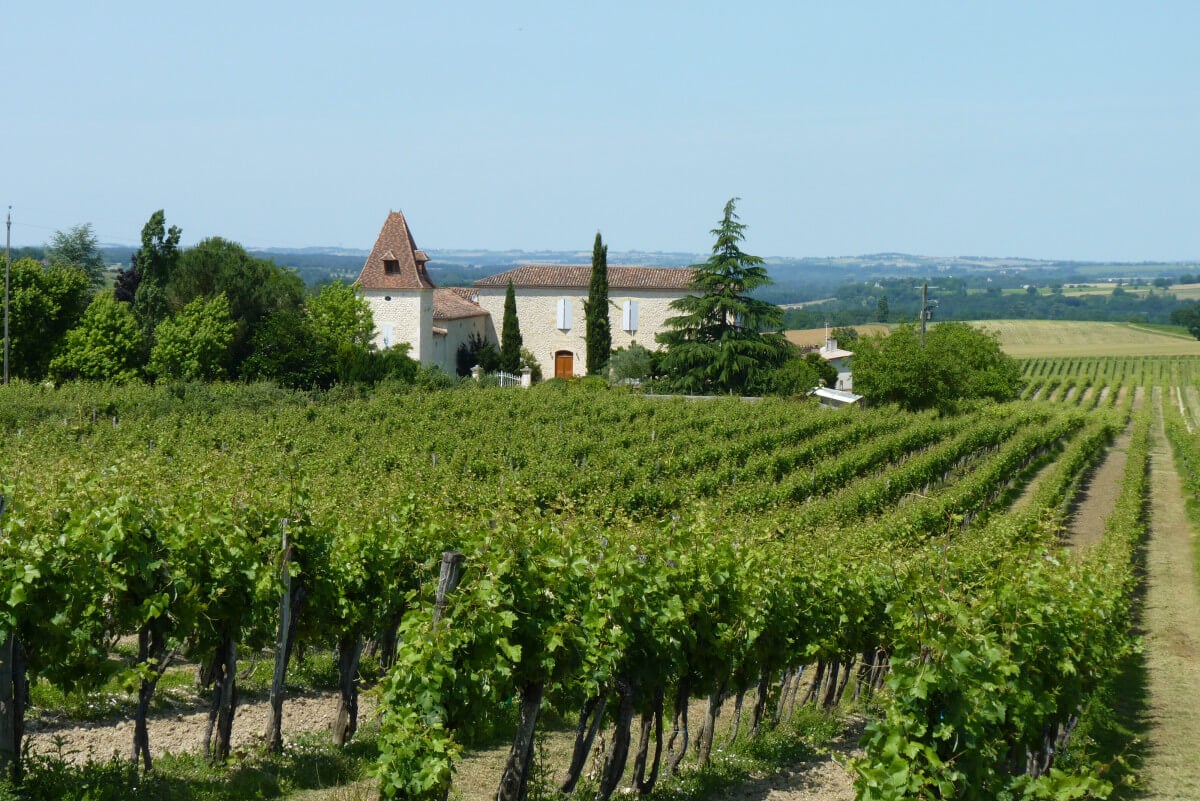by adminrif on 30-11-2020 in Articles1

Gascony Wines Part One: A Beginner’s Guide
Gascony Food & Drink
November 26th, 2020 4 minute read
By Rosa Smith
Gascony is renowned for its food, wine, and Armagnac – preferably enjoyed together at meals. The Gascony wine growing area today, known as ‘Cotes de Gascogne’, covers about 15,000 hectares mainly to the west of Auch, that has historically mostly produced Armagnac. Today this is the fourth most important wine region in France in terms of sales and production, with 100 million bottles sold each year, more than half of which is exported. This is a vast and fascinating subject – we can only touch the surface in one article, so watch out for part two…
Wine production in Gascony is as much a part of the region’s history as its culture. Planting vines came with the conquest of the area by the Romans under Julius Caesar, and wine production grew rapidly to supply the Legions. Following the marriage in 1152 of Eleanor Aquitaine, also Duchess of Gascony, to Henry II of England, Gascon wine became increasingly popular in England and elsewhere in Northern Europe. During the next 300 years of English rule, the export of Gascon wines (and ‘Gascon’ included Bordeaux wine) continued to grow. It is worth noting that the words ‘Bordeaux’ and ‘Claret’ are both of Gascon origin.
So why is Gascony such a fruitful region for wine production?
Well the geography of the area is perfect for viticulture thanks to its location between the mountains and the ocean. The ocean moderates temperatures while the mountains help to create a greater temperature differential between day and night, which any keen wine maker knows is ideal. The mild climate, lots of sunshine and good rainfall allows a long growing season for the grapes which therefore produce balanced, well-flavoured wines.
There are three main growing territories in Gascony, based on the historic areas of Armagnac: Bas-Armagnacto the west is the largest area with vines grown on clay and sand soil, Ténarèze, in the centre and north, where the soil is limestone and grapes produce aromatic and rich wines, and Haut-Armagnac, to the east and south, where the soil is made up of clay limestone and gravel soil, and wines are more delicate.
As wine has increasingly replaced Armagnac production over the last 50 years, Gascony has become known for its aromatic, fruity, well-balanced white wines which now make up 80% of total production and nearly all the export sales. However, Gascony is also increasingly producing serious, deep red wines that can compare well with their better-known cousins from Bordeaux. Gascony is unusual for the way in which winemakers have learned successfully to combine traditional, local grape varieties with well-known international varieties to produce interesting, authentic ‘country’ wines.
Across the whole Cotes de Gascogne region there are about 1000 growers, with some 800 working with the well-established, well-respected co-operatives and some 200 independent wine producers, some multi-generation family ‘vignerons’ of considerable talent. Often these independent growers are located in the interesting, smaller wine-making areas within or close to Cotes de Gascogne, such as Saint Mont, Madiran, and Pacherenc. In the next article, we will discuss these ‘sub-areas’, their local grapes and some of the independent growers and their wines.
No introduction to the wines of Gascony could be complete without mentioning ‘Floc de Gascogne’ (Flower of Gascony). This is a fortified wine (17% alcohol) dating from C16 and made by combining one third un-aged Armagnac spirit with two thirds unfermented grape juice. This popular aperitif or digestif (dessert) wine is usually served chilled and combines well with starters like Lectoure ‘Charentais’ melon or puddings like ‘Tarte Tatin’ and ‘Gascon Croustade’. Nothing could be more evocative of a summertime meal in Glorious Gascony!
Why not try Gascon wines for yourself?
One of our Simply Gascony properties, Chateau Pélat, has its own vineyard which produces a characteristically powerful Gascon red wine, ideal for winter drinking. If you rent Chateau Pélat for Christmas or New Year, you will be given a dozen bottles of Pélat Red as your ‘welcome’ present! Discover the property here.





